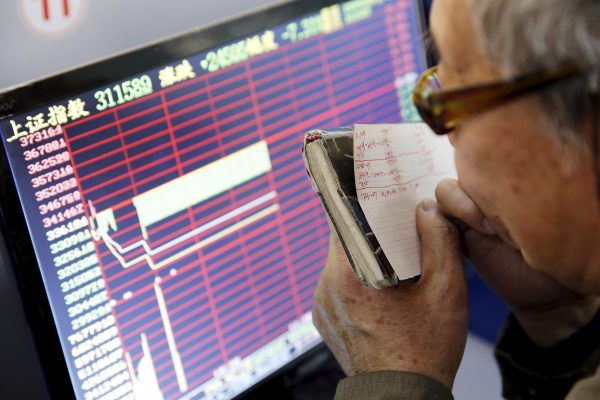, particularly in the Chinese stock market.
The study of speculative bubbles is a topic of long-standing interest in economic research. Bubbles appear when asset prices deviate from their fundamental values.
Our study uses the SADF and GSADF tests to identify the origin and termination of bubbles in the Shanghai A-share stock market. We employ data from the price index of the Shanghai A-share stock market and the dividend yield of the 1061 listed companies in the Shanghai A-share stock market.
The data analysis results correctly identified two prominent episodes of exuberance and collapse. The first bubble revolves around the subprime mortgage crisis between October 2006 and January 2009. And the second is a more recent bubble, extending from May 2014 to July 2015.
The origins of the first bubble crisis in China are found in the loose monetary and credit policies of 2006, which helped to instigate a flood of investment into the Shanghai A-share stock market. Consequently, the Shanghai A-share stock price grew by as much as 80 per cent from 2006–2007. In comparison, the Standard and Poor’s 500 stock price increased by only about 20 per cent during the same period.
At the time, Chinese regulatory authorities imposed policies that sought to reduce the risk of a stock market crash. For example, the People’s Bank of China raised the renminbi deposit reserve rate 10 times from the beginning of 2007. But the rising deposit reserve rate did not decrease excessive liquidity in the stock market. A large volume of hot money continued to flow into the Shanghai A-share stock market, driving the stock price continuously up.
At the end of 2007, global financial turbulence caused major international stock markets to fall sharply. From November 2007 to January 2009, the Shanghai A-share stock price fell 69.2 per cent, from 6209 points to 1911 points, setting an international milestone as the largest-ever such share price decline in history. With limitations on short selling of Chinese stock markets, the stock price reveals mainly good news, such as the split-share reform and the expectation of renminbi appreciation. When the hidden bad news was released comparatively suddenly, stocks didn’t just drop — they dropped heavily.
The second bubble collapse in China was formed in early 2014. On the last trading day of 2013, the Shanghai A-share price index closed at 2116 points. This was the fourth consecutive year that the Shanghai A-share stock market ended lower than it had started. But, from May 2014, it started to rise again and grew 138.3 per cent between mid-2014 and June 2015.
There are several reasons for this rally. First, after the subprime crisis, China retained a steady economic growth rate compared to the lacklustre performance of many other economies. This climate of higher macroeconomic growth has provided favourable conditions for the rise of the A-share index. Meanwhile, the People’s Bank of China imposed policies for monetary easing and to encourage loose credit. Such policies increased market liquidity, which helped the A-share stock market rebound.
But by 19 June 2014, the Shanghai A-share market’s weekly decline was as high as 13.32 per cent, the biggest weekly decline since 2008. The Shanghai A-share market continued to fall until 3 July 2014.
So what can we learn from these bubble periods in China’s stock market?
One interesting point is how similar the formation, development and bursting of these bubbles were. In both cases the bubbles were initially formed as a result of stock market liquidity, which promoted the value of the stock market.
But problems began with the appearance of a high price-to-earnings (PE) ratio, which indicates a relatively higher market price of shares. For instance, the PE ratio of the Shanghai A-share stock market was up 22 times by June 2014. If there isn’t a proper return on equity matching the PE ratio, the Shanghai A-share stock market will most likely fall.
And this is exactly what happened in the bursting of China’s bubbles. A high PE ratio and turnover rate, as well as some irrational behaviour, induced the bubble to gradually inflate until it was out of control. Ultimately, bad news or a sudden market crisis rapidly punctured the bubble and destroyed the false prosperity of the stock market.
Also, under China’s high-leverage stimulus, herding behaviour drove many institutional investors to sell their shares. Thus, when the stock index fell many of the leveraged funds were required to liquidate.
Our study confirms the existence of two bubbles in the Shanghai A-share stock market retrospectively. The use of these results for understanding past bubbles in the Shanghai A-share stock market is significant. Further research is needed to explore methods to best predict future bubbles.
Zhenya Liu is a Professor at the School of Finance, Renmin University of China and Head of the Applied Quantitative Financial Economic Research Group, University of Birmingham.
Danyuanni Han is a researcher at the Department of Economics, University of Birmingham.
Shixuan Wang is a PhD candidate at the Department of Economics, University of Birmingham and Junior Fellow at Royal Economic Society.
This article is a digest of the authors’ chapter from the publication for the latest China Update, which was held at the ANU on Friday 22 July. A free e-book is available here.

